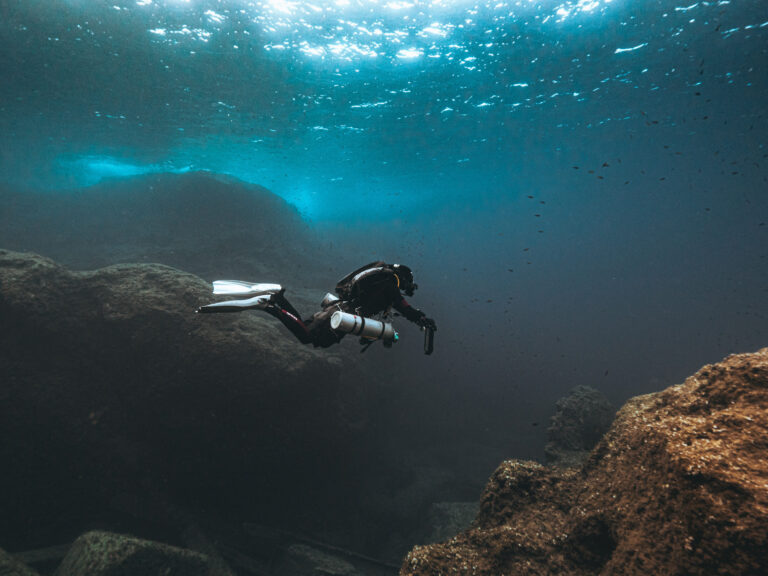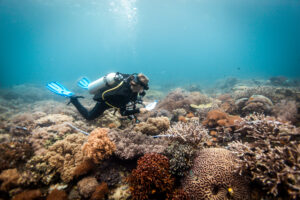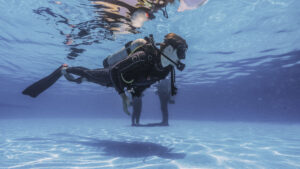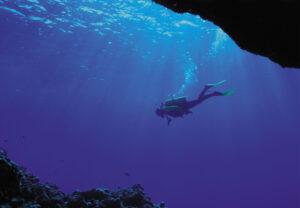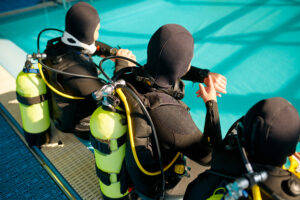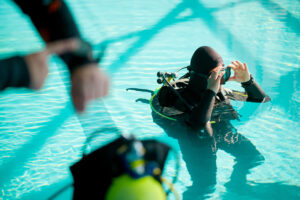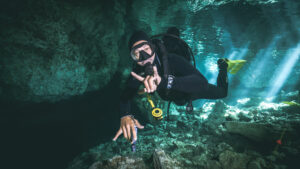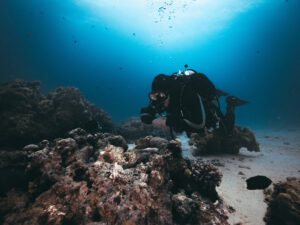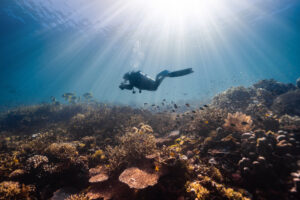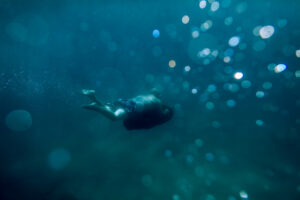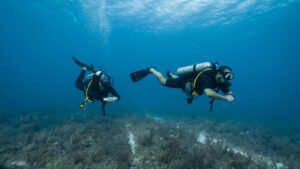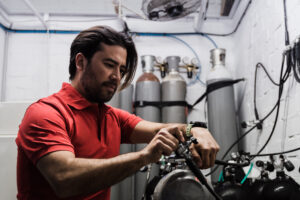What is High Pressure Nervous Syndrome (HPNS)?
High Pressure Nervous Syndrome (HPNS) is a neurological and physiological condition that affects individuals exposed to high-pressure environments, primarily encountered during deep-sea diving and underwater activities. It is a critical issue for divers, particularly those engaging in dives deeper than 150 meters (492 feet), where the effects of high pressure on the human body become increasingly pronounced. Understanding HPNS is essential for ensuring the safety and well-being of divers operating in extreme underwater conditions, as it can significantly impact their performance and health.
Definition and Background
High Pressure Nervous Syndrome is defined as a disorder resulting from exposure to high ambient pressures, typically experienced during deep-sea diving with the use of breathing gases such as helium-oxygen mixtures. HPNS manifests as a combination of neurological and physiological symptoms, which can include tremors, dizziness, nausea, and cognitive impairments. The severity of these symptoms is often related to the depth and speed of descent, as well as the individual’s susceptibility to high-pressure environments.
The syndrome was first identified and described in the 1960s during experiments conducted by the United States Navy and other organizations exploring the limits of human tolerance to high-pressure conditions. These studies aimed to understand the challenges faced by divers working at great depths and to develop safety protocols to mitigate the risks associated with such activities. Over the years, research has provided valuable insights into the mechanisms and effects of HPNS, contributing to the development of preventive measures and treatment strategies.
Causes and Mechanisms
High Pressure Nervous Syndrome is primarily caused by the exposure of the nervous system to high ambient pressures, typically greater than 10 atmospheres (approximately 100 meters or 328 feet underwater). This exposure leads to various physiological and biochemical changes within the body. One of the main factors contributing to HPNS is the increased pressure’s effect on the lipid membranes of nerve cells, which can alter their function and lead to abnormal neural activity.
At the cellular level, high pressure can disrupt the normal function of ion channels and neurotransmitter systems, resulting in altered nerve signal transmission. The exact mechanisms are complex and involve multiple factors, including changes in the fluidity of cell membranes, modulation of ion channel activity, and alterations in neurotransmitter release and uptake. These changes can lead to a range of neurological symptoms, such as tremors, muscle twitching, and cognitive impairments.
Another contributing factor to HPNS is the use of helium-oxygen breathing mixtures, which are often necessary for deep dives due to the narcotic effects of nitrogen at high pressures. While helium reduces these narcotic effects, it can also contribute to HPNS by affecting the nervous system in different ways. The precise interplay between pressure, breathing gases, and individual susceptibility makes HPNS a complex condition to study and manage.
Symptoms and Diagnosis
The symptoms of High Pressure Nervous Syndrome can vary widely in severity and presentation, but they generally include both neurological and physiological manifestations. Neurological symptoms often involve tremors, involuntary muscle contractions, and motor coordination difficulties. Divers may experience dizziness, vertigo, and visual disturbances, which can impair their ability to perform tasks underwater. Cognitive symptoms such as confusion, memory lapses, and difficulty concentrating are also common, potentially compromising safety and decision-making during dives.
Physiological symptoms of HPNS can include nausea, vomiting, and general malaise. Some individuals may experience a sense of anxiety or restlessness, which can further exacerbate the condition. The onset of symptoms typically occurs during the descent phase of a dive and may worsen with increasing depth and speed of descent.
Diagnosing HPNS involves a combination of clinical assessment and the evaluation of a diver’s medical history and symptoms. Medical professionals may use neurological examinations and cognitive tests to assess the extent of impairment. Additionally, monitoring the descent rate and depth during dives can help identify patterns associated with HPNS. Early recognition and intervention are crucial to prevent the progression of symptoms and ensure the safety of the affected individual.
Effects on Divers
The effects of High Pressure Nervous Syndrome on divers can be profound, impacting their ability to perform tasks and compromising overall safety. The combination of neurological and cognitive symptoms can impair motor skills, coordination, and decision-making, making it challenging to navigate and operate equipment underwater. In severe cases, HPNS can lead to incapacitation, increasing the risk of accidents and injuries during dives.
The short-term effects of HPNS often include reduced performance and increased error rates, which can jeopardize the success of diving operations. Divers experiencing tremors, dizziness, and cognitive impairments may struggle with tasks requiring precision and concentration, such as operating tools, managing buoyancy, and communicating with team members. These challenges can be particularly problematic during complex and demanding underwater missions.
Long-term effects of HPNS are less well understood but may include persistent neurological and cognitive deficits. Repeated exposure to high-pressure environments and the associated stress on the nervous system could potentially lead to lasting impairments. This underscores the importance of careful monitoring and management of divers’ health and well-being, particularly those who frequently engage in deep-sea diving activities.
Preventive Measures
Preventing High Pressure Nervous Syndrome involves a combination of strategies aimed at minimizing the risk of exposure and managing the factors that contribute to its development. One of the primary preventive measures is careful dive planning, including the regulation of descent rates and the use of staged decompression stops. Gradual and controlled descents can help reduce the stress on the nervous system and mitigate the onset of symptoms.
The use of breathing gas mixtures is another critical aspect of preventing HPNS. Helium-oxygen mixtures, commonly used in deep-sea diving, can help reduce the narcotic effects of nitrogen but must be carefully managed to avoid contributing to HPNS. Divers and support teams must ensure that the gas mixtures are correctly formulated and administered to maintain safety and minimize the risk of adverse effects.
Technological advancements in diving equipment also play a significant role in preventing HPNS. Modern diving suits and helmets are designed to withstand high pressures and provide better protection for divers. Additionally, the use of advanced monitoring systems can help track a diver’s physiological responses to pressure and provide real-time data to support decision-making and intervention.
Management and Treatment
Managing and treating High Pressure Nervous Syndrome requires a multifaceted approach that addresses both immediate and long-term needs. Immediate management involves recognizing the onset of symptoms and taking appropriate actions to mitigate their impact. This may include slowing the descent rate, ascending to a shallower depth, and providing supportive care to the affected diver.
Medical interventions for HPNS may involve the use of medications to manage symptoms such as tremors and nausea. Sedatives and anti-anxiety medications can help alleviate some of the neurological and psychological symptoms, while antiemetics can address nausea and vomiting. In severe cases, hyperbaric oxygen therapy may be used to reduce the effects of high pressure on the nervous system and promote recovery.
Long-term management of HPNS focuses on monitoring and supporting divers who have experienced significant symptoms. This may involve regular medical check-ups, neurological assessments, and cognitive evaluations to detect any lasting impairments. Divers may also benefit from rehabilitation programs designed to improve motor skills, cognitive function, and overall well-being. Ensuring that divers are fit for future dives and minimizing the risk of recurrence are key aspects of long-term management.
Research and Observations
Research on High Pressure Nervous Syndrome has provided valuable insights into its causes, mechanisms, and effects. Studies conducted by organizations such as the United States Navy, commercial diving companies, and academic institutions have contributed to a deeper understanding of HPNS and its impact on divers. Research has focused on identifying the physiological limits of human tolerance to high pressures and developing strategies to enhance safety and performance in deep-sea diving.
Observations from notable diving expeditions and experiments have highlighted the variability in individual susceptibility to HPNS. Factors such as age, physical fitness, and prior exposure to high-pressure environments can influence the likelihood and severity of symptoms. These findings underscore the importance of personalized approaches to dive planning and management, taking into account the unique characteristics and needs of each diver.
Ongoing research continues to explore the complex interactions between pressure, breathing gases, and the nervous system. Advances in technology and medical science are expected to further enhance our understanding of HPNS and improve the safety and effectiveness of deep-sea diving operations. The knowledge gained from research not only benefits divers but also contributes to broader applications in fields such as aerospace medicine and hyperbaric therapy.
Key Takeaways
High Pressure Nervous Syndrome is a significant concern for individuals engaged in deep-sea diving and underwater activities. Understanding its causes, symptoms, and effects is crucial for ensuring the safety and well-being of divers. Preventive measures, careful management, and ongoing research are essential for mitigating the risks associated with HPNS and improving the overall safety of deep-sea diving operations. By recognizing the challenges posed by high-pressure environments and implementing effective strategies, the diving community can continue to explore the depths of the ocean while safeguarding the health of those who venture into these extreme conditions.

